
An oil spill is the release of a liquid petroleum hydrocarbon into the environment, especially the marine ecosystem, due to human activity, and is a form of pollution. The term is usually given to marine oil spills, where oil is released into the ocean or coastal waters, but spills may also occur on land. Oil spills may be due to releases of crude oil from tankers, offshore platforms, drilling rigs and wells, as well as spills of refined petroleum products and their by-products, heavier fuels used by large ships such as bunker fuel, or the spill of any oily refuse or waste oil.
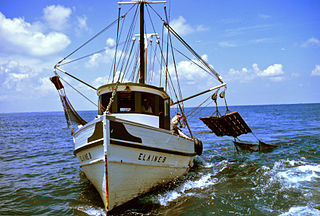
The fishing industry includes any industry or activity that takes, cultures, processes, preserves, stores, transports, markets or sells fish or fish products. It is defined by the Food and Agriculture Organization as including recreational, subsistence and commercial fishing, as well as the related harvesting, processing, and marketing sectors. The commercial activity is aimed at the delivery of fish and other seafood products for human consumption or as input factors in other industrial processes. The livelihood of over 500 million people in developing countries depends directly or indirectly on fisheries and aquaculture.

Commercial fishing is the activity of catching fish and other seafood for commercial profit, mostly from wild fisheries. It provides a large quantity of food to many countries around the world, but those who practice it as an industry must often pursue fish far into the ocean under adverse conditions. Large-scale commercial fishing is called industrial fishing.

Pearl hunting, also known as pearl fishing or pearling, is the activity of recovering or attempting to recover pearls from wild molluscs, usually oysters or mussels, in the sea or freshwater. Pearl hunting was prevalent in the Persian Gulf region and Japan for thousands of years. On the northern and north-western coast of Western Australia pearl diving began in the 1850s, and started in the Torres Strait Islands in the 1860s, where the term also covers diving for nacre or mother of pearl found in what were known as pearl shells.

Drift netting is a fishing technique where nets, called drift nets, hang vertically in the water column without being anchored to the bottom. The nets are kept vertical in the water by floats attached to a rope along the top of the net and weights attached to another rope along the bottom of the net. Drift nets generally rely on the entanglement properties of loosely affixed netting. Folds of loose netting, much like a window drapery, snag on a fish's tail and fins and wrap the fish up in loose netting as it struggles to escape. However, the nets can also function as gill nets if fish are captured when their gills get stuck in the net. The size of the mesh varies depending on the fish being targeted. These nets usually target schools of pelagic fish.
Individual fishing quotas (IFQs), also known as "individual transferable quotas" (ITQs), are one kind of catch share, a means by which many governments regulate fishing. The regulator sets a species-specific total allowable catch (TAC), typically by weight and for a given time period. A dedicated portion of the TAC, called quota shares, is then allocated to individuals. Quotas can typically be bought, sold and leased, a feature called transferability. As of 2008, 148 major fisheries around the world had adopted some variant of this approach, along with approximately 100 smaller fisheries in individual countries. Approximately 10% of the marine harvest was managed by ITQs as of 2008. The first countries to adopt individual fishing quotas were the Netherlands, Iceland and Canada in the late 1970s, and the most recent is the United States Scallop General Category IFQ Program in 2010. The first country to adopt individual transferable quotas as a national policy was New Zealand in 1986.

The fishing industry in Scotland comprises a significant proportion of the United Kingdom fishing industry. A recent inquiry by the Royal Society of Edinburgh found fishing to be of much greater social, economic and cultural importance to Scotland than it is relative to the rest of the UK. Scotland has just 8.4 per cent of the UK population but lands at its ports over 60 per cent of the total catch in the UK.

Fishing in India is a major sector within the economy of India contributing 1.07% of its total GDP. The fishing sector in India supports the livelihood of over 28 million people in the country, especially within the marginalized and vulnerable communities. India is the third largest fish producing country in the world accounting for 7.96% of the global production and second largest producer of fish through aquaculture, after China. The total fish production during the FY 2020-21 is estimated at 14.73 million metric tonnes. According to the National Fisheries Development Board the Fisheries Industry generates an export earnings of Rs 334.41 billion. Centrally sponsored schemes will increase exports by Rs 1 lakh crore in FY25. 65,000 fishermen have been trained under these schemes from 2017 to 2020. Freshwater fishing consists of 55% of total fish production.

Fishing in Ghana is made up of both ocean caught fish, as well as freshwater fishing in lakes and rivers.
Fishing in Angola is mainly performed by foreign fleets. Some of the foreign fishing fleets operating in Angolan waters were required by the government to land a portion of their catch at Angolan ports to increase the local supply of fish. Fishing agreements of this kind were reached with several countries, including with Spain, Japan, and Italy.
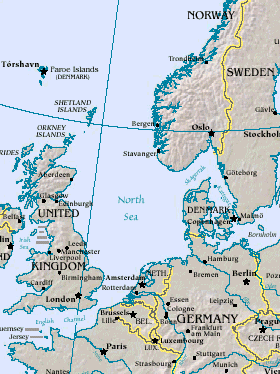
Fishing in the North Sea is concentrated in the southern part of the coastal waters. The main method of fishing is trawling.

China has one-fifth of the world's population and accounts for one-third of the world's reported fish production as well as two-thirds of the world's reported aquaculture production. It is also a major importer of seafood and the country's seafood market is estimated to grow to a market size worth US$53.5 Billion by 2027.
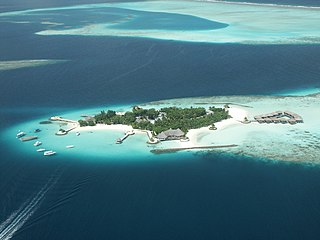
The fishing industry in the Maldives is the island's second main industry. According to national tradition in the words of former President Maumoon Abdul Gayoom, "Fishing is the lifeblood of our nation, it is inborn. From the soil on which we live, to the sea around us, it remains an integral part of our existence. Fishing, and our country and its people, [are] one and shall remain inseparable forever." The Maldives has an abundance of aquatic life and species of fish. Common are tuna, groupers, dolphin fish, barracuda, rainbow runner, trevally and squirrelfish and many more. Aside from being of essential importance to the economy, fishing is also a popular recreational activity in the Maldives, not only among locals but by tourists. The islands have numerous fishing resorts which cater for these activities.
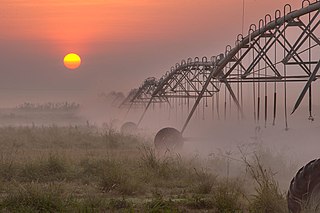
Agriculture in Qatar is inherently limited in scope due to the harsh climate and lack of arable land. In spite of this, small-scale farming, nomadic herding, and fishing were the predominant means of subsistence in the region prior to the 20th century. Sea-based activities such as pearling and fishing served as the primary sources of income for Qataris until the commencement of oil drilling in 1939.
Agriculture in Oman has been important for centuries. The government's economic development policy emphasizes the expansion of such non-oil sectors as agriculture, fishing, industry, and mining in its bid to diversify the economy and diminish its dependence on oil exports. The goal is to establish a sustainable economic base in preparation for the time when hydrocarbon reserves are depleted. The government launched several economic campaigns, naming 1988 and 1989 as Years of Agriculture and 1991 and 1992 as Years of Industry. Through these campaigns, the government has encouraged private-sector investment by allocating generous amounts of cash support for private industry to be disbursed mainly through official development banks. For example, the Oman Bank for Agriculture and Fisheries, created in 1981, extends loans at concessionary rates to individuals for whom farming or fishing is the principal activity. The bank acts as a distributive institution, receiving an interest subsidy from the government. In 1990 there were 1,308 loans, totaling RO4.7 million. Development programs also incorporate the government's policy of indigenization, with a large component of funds.
Agriculture in the United Arab Emirates, including fishing, was a minor part of the UAE economy in the early 1990s, contributing less than 4 percent of GDP. Since the formation of the UAE, the availability of capital and the demand for fresh produce have encouraged agricultural development. The main farming areas are Digdaga in Ras al-Khaimah. Falaj al Mualla in Umm al Qawain, Wadi adh Dhayd in Sharjah, Al Awir in Dubai and the coastal area of Al Fujairah. Total cultivable land was around 70,000 hectares as of the early 1990s.

Fishing in Israel is a branch of the Israeli economy with historical significance. The three main natural fishing zones are the Mediterranean Sea, the Gulf of Aqaba, and the Kinneret. A fourth area that was once historically significant, Lake Hula, no longer exists, as it was drained in the 1950s. In addition, aquaculture the growth of fish in ponds or in cages, is rising in prominence.
The fishing industry in Thailand, in accordance with usage by The World Bank, the UN's Food and Agriculture Organization (FAO) and other multinational bodies, refers to and encompasses recreational fishing, aquaculture, and wild fisheries both onshore and offshore.
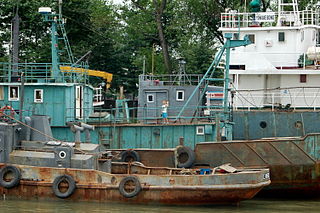
The fishing industry in North Korea provides an important supplement to the diet and for export. The catch in 2001 totaled 200,000 tons of wild-caught seafood and 63,700 tons produced using aquaculture. The major fishing grounds are in the coastal areas of the Sea of Japan to the east and the Yellow Sea to the west. The main fishery ports are Sinpo, Kimchaek, and the nearby deep-sea fishery bases of Yanghwa and Hongwfin. The principal catch from the Sea of Japan is pollock.

Landlocked Switzerland supports a small commercial fishing industry in its many large lakes. About 200 fishermen nationally ply them in small boats, supplemented by fish farmers who largely raise trout and some carp. The former catch primarily perch and whitefish, with pike, lake trout and Arctic char making up significant portions of the country's 12,000-tonne annual catch. Angling is also popular, while fish processing is marginal, largely limited to making fish oil for the country's drug industry.














